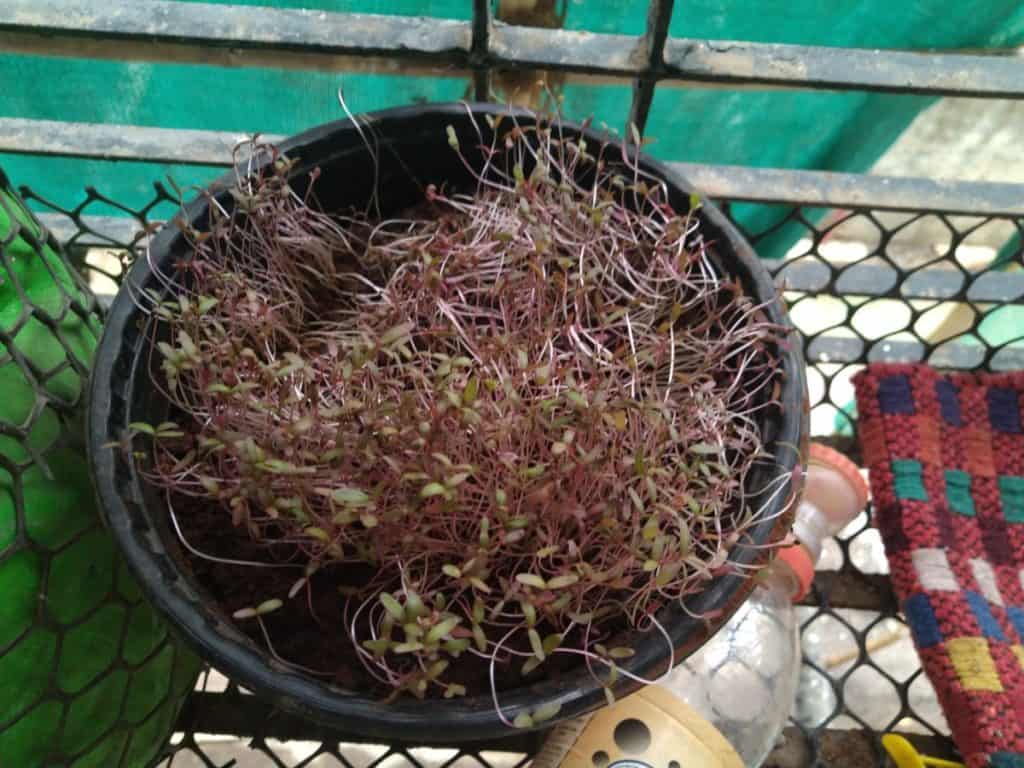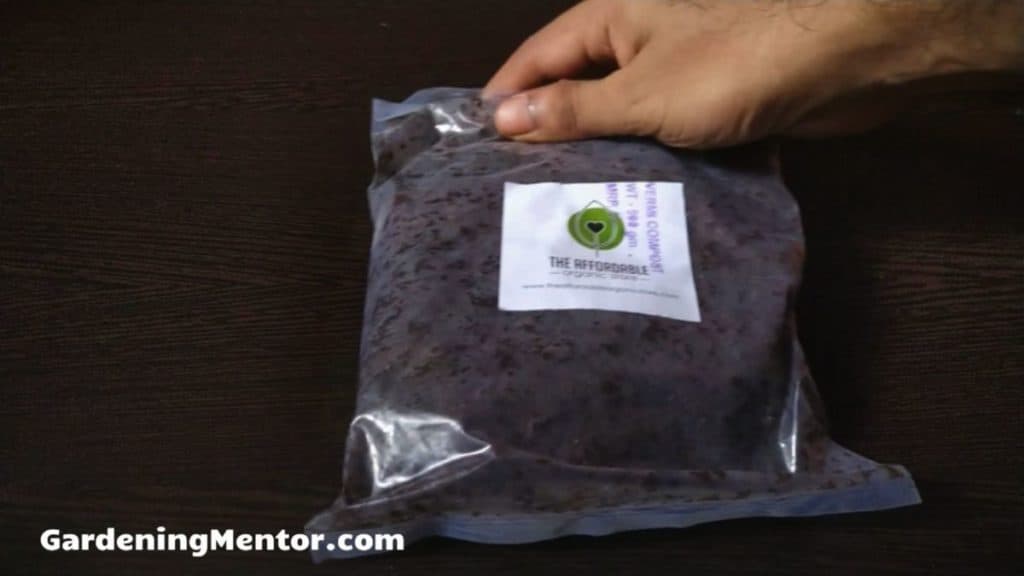There’s a lot of rain in the place I live during the monsoon season. I wanted to understand what would be the effect of such heavy rain on the plants I grow in my garden.
Your plants will die from too much rain if the soil remains flooded with water for many days. This causes fungal problem such as root rot damaging the plant roots. The plant can’t get the required nutrients, moisture, oxygen due to the damage. So the plant will eventually die.
I’ve written a lot of details below on what problems heavy rains can cause for your plants in the garden and what precautions or actions you can take.
What happens to the garden when you get too much rain?
1. Plants may get infected with disease
One of the problems heavy rain causes it to create a humid environment. It also splashes the soil on the foliage causing fungal and bacterial diseases to reach the leaves.
Some of the common diseases you may find infecting your plant after a rain include powdery mildew, downy mildew, and Fusarium rot.
2. It could cause a lack of sunlight
The overcast conditions that occur during and after heavy rains will reduce the sunlight that reaches your plants. If you have many such overcast days, it can end up stunting the growth of the plant as it cannot create sufficient food.

3. Excess rain would leach nutrients
If you’re growing plants in-ground in your garden, the heavy rains will wash away the soil. It will also leach out the nutrients and beneficial microorganisms from the soil.
The lack of nutrients will stunt the growth of your plants unless you reinvigorate the soil by adding organic compost and fertilizer.

4. There will be a lack of pollinators
When there are heavy rains, the pollinators like bees and other insects cannot move freely among the plants. This means they won’t be able to pollinate your plants.
This is a critical problem to have when your plants have reached the stages of flowering and growing fruit. A lack of pollinators can harm the potential growth of fruit on your plants.
5. Excess water would cause drowning roots
The most common problem with too much rain is the same as overwatering. The water can soak up the soil and drown the roots because of a lack of air circulation.
This environment attracts bacteria that can cause root rot. The roots cannot supply the required nutrients to the plant and it may die.
6. Heavy rains would injury plant roots
The heavy rains can also end up damaging the roots of your plants. The injured roots can attract pests and harmful bacteria that will damage or kill the plants.
Some of the soil may wash away and expose the roots. Such roots can become an attractive food source for the pests, fungal, and bacterial diseases.
7. Heavy rains would cause leaning trees and plants
Strong winds can accompany heavy rains. Both these factors may end up causing the trees and plants to lean over. This can be harmful not just for the trees and plants, but to people in the vicinity.
8. The rains can cause cracked fruits
The heavy rains can end up providing too much water to plants. The fruiting plants that receive too much water can get the problem of cracked roots.
The plants that have this issue due to overwatering include tomatoes, radishes, melons, and squash. Cracked fruits cannot last long and need to be consumed as soon as you harvest them.
How to deal with too much rain in the garden
There are things you can do before and after a heavy rain that will help you protect your plants and even save them if possible.
1. Use a raised bed
Raised beds are a better option in a garden that gets too much rain. Since they are raised above the ground, they can avoid the problem of flooding because of heavy rain.
Another benefit of creating a raised bed is that you prepare the soil in it. This soil will be loamy and drain out the excess moisture. You also prevent the problem of the soil washing away because it’s inside a bed.
2. Create a channel to divert the water
If your garden gets a lot of rain, you can create a barrier or channel based on the source of water. If the water flows down from a slope, you can put a barrier to prevent this.
If the water is flowing through your garden, you can create a channel using a pipe to direct the water away from the garden.
3. Treat the infected plants
Once the rain has subsided, you can take care of the plants in your garden. If the plants are infected with a fungal disease, you will need to trim the diseased parts of the plant. Or, in the worst case, dispose of the plant.
You can cut off the lower leaves of the plants that come in contact with the soil. This will reduce the chances of fungal diseases infecting the plant.
You can also choose to grow native plants or varieties that are resistant to some of the fungal and bacterial diseases that might be common after heavy rain.
4. Add mulch on top of the soil
Mulch can be a good and bad thing after too much rain. So you need to be careful using it.
After the heavy rains, you need to remove the mulch from your garden. This allows the soil to drain out the water faster than if the mulch was covering it.
But it’s good to add a light layer of mulch in such a garden as it will prevent the water from splashing on the foliage. It will also prevent the weeds from growing in the soil after the rains.
5. Provide support to plants
Plants and trees may lean over and fall when the heavy rains wash away the soil that holds them in place. It’s good to provide plants and trees with the required support before and after the rains.
You can use stakes, cages, or trellises to give the plants support. And you can use metal supports to keep the trees standing firmly in their place.
6. Stay out of the mud
Your garden will get muddy after heavy rain and if you walk on it the soil will get compacted. This will prevent the air circulation in the soil, causing your roots to suffocate and rot.
It’s best to stay away from the soil where the plants are growing after a rain. You can place a light layer of mulch on the soil and that can help prevent it from getting too compacted.
7. Remove damaged and dead plant material
If you live in a place with heavy rains, you need to take the precautions and remove dead or damaged plant material before such rains can start.
This will help prevent such material from falling on your other plants and trees, as well as people who are unfortunate enough to walk near them.
The dead and damaged plant material can also attract pests and diseases that would harm your healthy plants and trees.
8. Cover the delicate plants
If you’re growing small plants like vegetables and herbs, the heavy rains and winds can cause significant damage to them. It’s best to cover them with a tarpaulin before the rains.
Place the cover in such a position that the water can flow down and away from the plants. You can also attach a windbreak near your plants and trees that would protect them from the heavy winds.
9. Add fertilizer
After the heavy rains, a lot of nutrients and beneficial microorganisms will have leached out from the soil. It’s best to reintroduce such nutrients back in the soil by using organic compost and fertilizer.
Make sure that the soil is dry and the plants are free from any pests and diseases before you add the fertilizer.

Fact Checked, Written, and Published by Kevin Rodrigues
Kevin is the founder of Gardening Mentor, a website that aims to teach people to grow their own food in a limited space. As a self-taught gardener, Kevin has spent several years growing plants and creating gardening content on the website. He is certified in Home Horticulture and Organic Gardening from Oregon State University. He has a Post Graduate Diploma in Horticulture and Landscape Gardening from Mumbai University.
Read more
